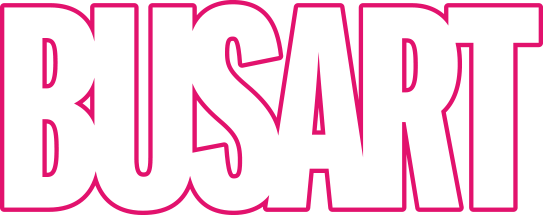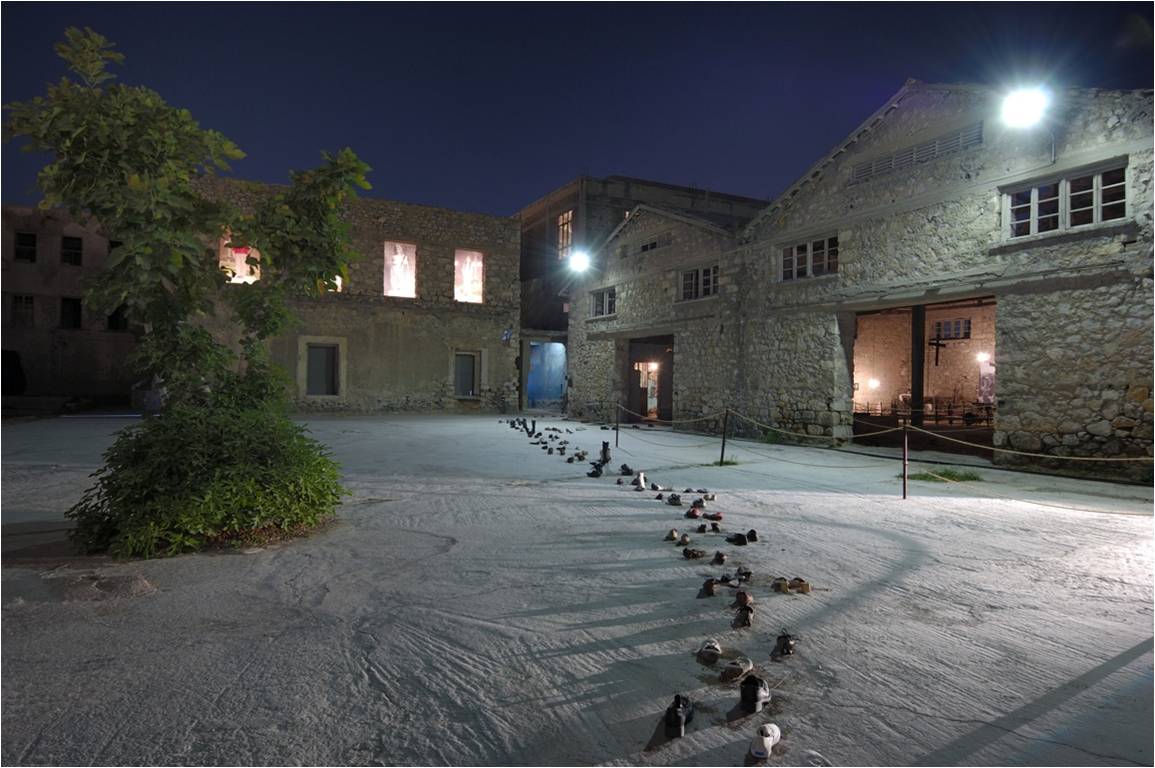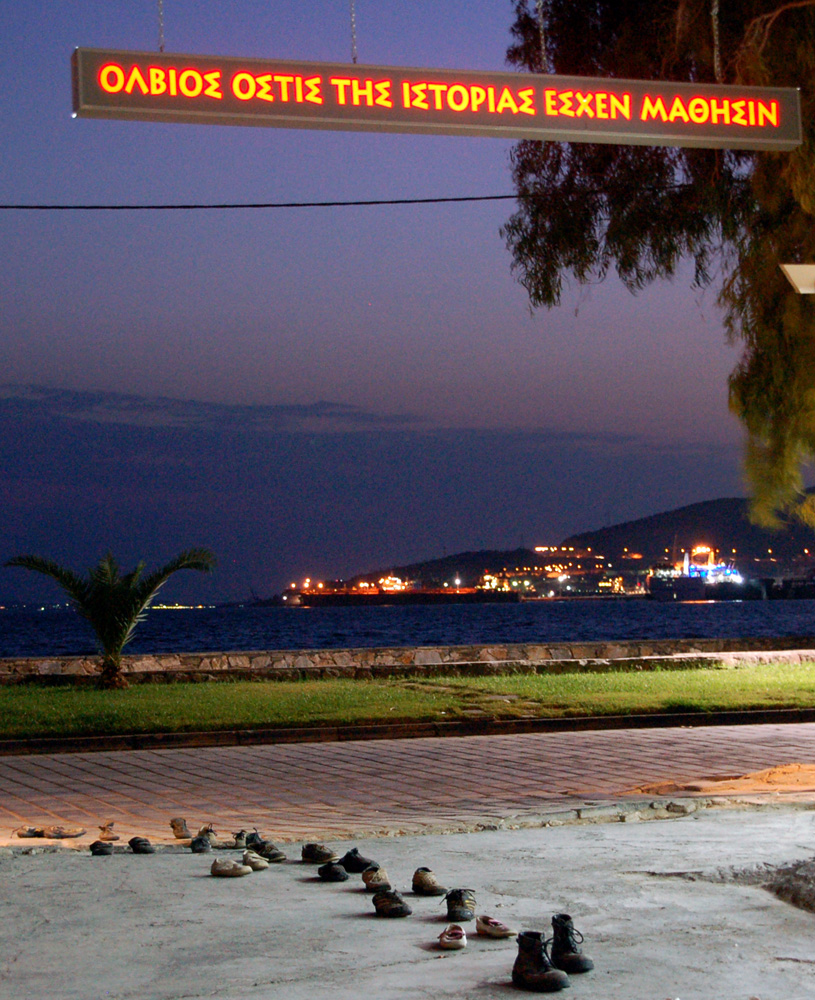The artistic intervention in the Old Olive Oil Factory – Soap Factory of Elefsina, of 17.705 sqm, was developed in 18 spaces – outposts of memory. Specifically, it contained 18 video projections (total duration of 3 hours and 4 minutes), 4 sound environments, 9 light boxes, 17 wall illustrations and 42 photographs. In this way, the abandoned factory was symbolically reopened, but this time in the context of the history of the city and its people. The autumn presentation of Marios Spiliopoulos in that Eleusinian space comprised an event among the artistic happenings of this country, which, at least in terms of sheer size, has no precedent. 4,000 pairs of shoes, donated by Eleusinian residents of every age, silently framed a track of footprints, forming a corridor nearly one-half kilometer long to create a modern version of the ancient Eleusinian procession. Photographs of dozens of the area’s schoolchildren, former factory workers, refugees from the Asia Minor Disaster, modern-day immigrants, members of the Paneleusiniakos Football Club – all mixed together with images from myth and history, from Demeter and Persephone to Stelios Kazantidis and Tanos Tsingos -turn this space into an enormous tableau in which the artist, in his wanderings through Eleusina, relates their words and their very existence. In creating this work, the artist doesn’t focus on the abstract moments in history but rather on the faces which comprise the raw material of life, the acting individuals. In Marios Spiliopoulos’ post-realism, these persons are not theoretical constructs, they exist, they stand upright in front of the camera, they sing and are photographed, they become the artist’s direct interlocutors, co-creators of their own work, the social production of art. “We are the voices of many people”, the artist tells us, condensing in this phrase which distills the essence of his philosophical reflection throughout the years of his artistic career. This is how he worked in Elefsina, like a messenger in an ancient drama, a shaman of the world, who, in order to succeed, must free himself of all identification with the idea of artistic genius and of “the romantic invevtion of charismatic individualism” as Roland Barth wrote. This is how Marios Spiliopoulos was able to approach the inhabitants of Eleusina, to unfold their souls and become himself the narrator of their history, the mediator of their ideas. Marios Spiliopoulos’s work left a redemptive emotion, simple in its effect but difficult in conception, a feeling which frees a viewer and creates new bases for the role of the work of art and its audience. The artist’s poetic discourse, perched on the ruins of the soap factory, allied itself with the dust of centuries to converse with the history of the city, to whisper a history of the world.
The presumption of emotion
Marios Spiliopoulos presented in the autumn of 2008 at the Old Olive Oil and Soap Factory of Elefsina his installation Human Traces. There he attempted a comprehensive revival of the collective memory of the site and a timeless coupling of the mythological with the recent industrial past. This route unfolds multiple layers of the city’s cultural history and emphasizes the need for historical knowledge through interventions at monuments. The artist adopts the role of coordinator or animator of the whole project, actively negating the absolute distinction between producer and recipient of the work of art and utilizing – I would add – the modern methodological tools of the historian, for whom there is no evaluative difference between valuable and trivial material evidence in the interpretation of the historical past. Oral testimonies are only some of the emotional evidence that are enlisted as means of retrieving multiple versions of collective memory. The shift of the gaze from the large to the small and everyday is organically linked to the artist’s reintegration in terms of co-creation: “We are all voices of many people”, Marios Spiliopoulos concludes, serving with his work the demand to reconnect art with the act of life. SYRAGO CHIARA
Credits
Exhibition assistants: Katerina Athanasiou, Voula Androni, Andreas Arapakis, Antonis Lakidis, George Spyropoulos Cameraman: Theo Vogiatzis, Nikos Giannoulos, Marios Spiliopoulos


